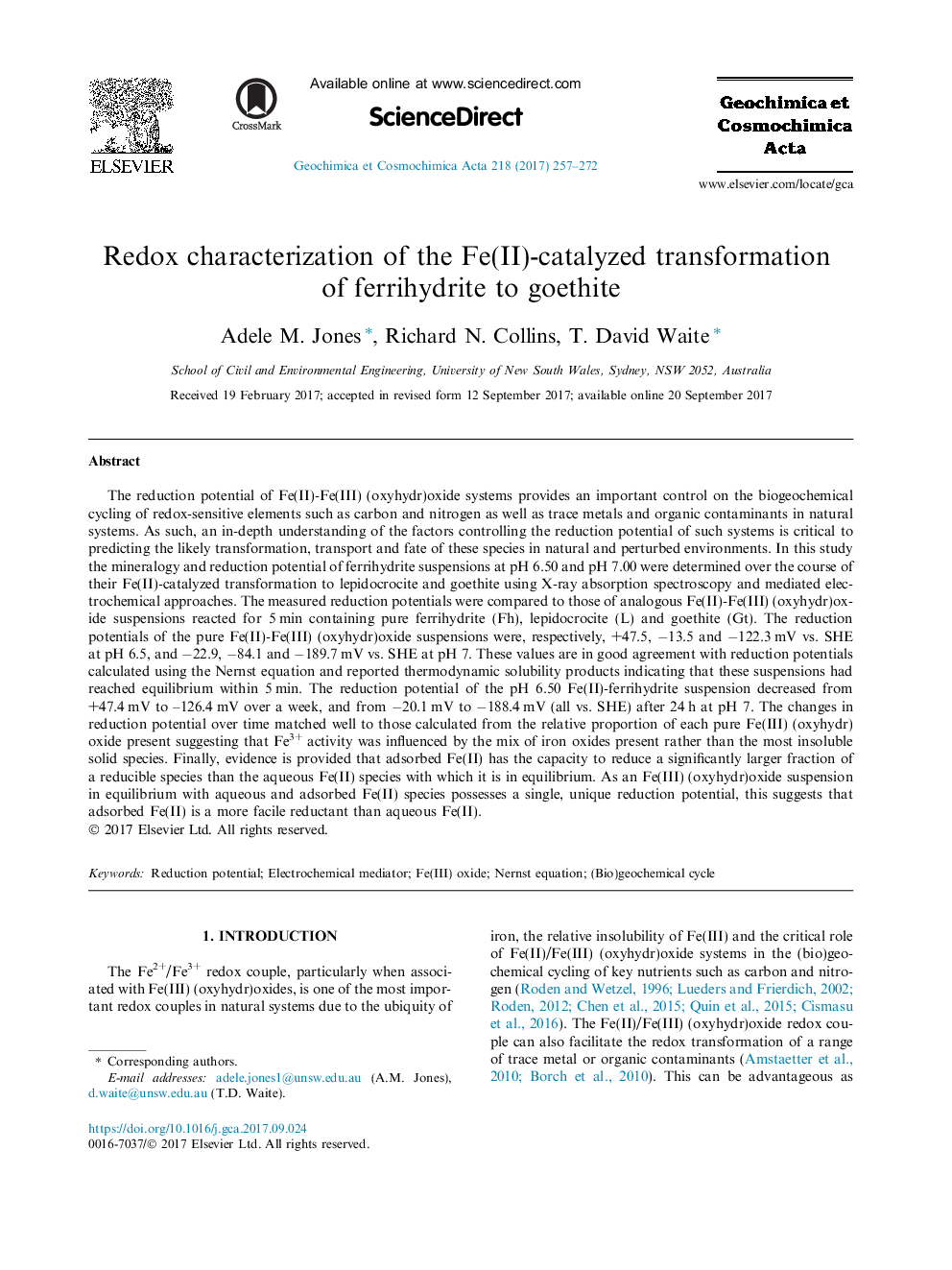| کد مقاله | کد نشریه | سال انتشار | مقاله انگلیسی | نسخه تمام متن |
|---|---|---|---|---|
| 5783309 | 1637939 | 2017 | 16 صفحه PDF | دانلود رایگان |

The reduction potential of Fe(II)-Fe(III) (oxyhydr)oxide systems provides an important control on the biogeochemical cycling of redox-sensitive elements such as carbon and nitrogen as well as trace metals and organic contaminants in natural systems. As such, an in-depth understanding of the factors controlling the reduction potential of such systems is critical to predicting the likely transformation, transport and fate of these species in natural and perturbed environments. In this study the mineralogy and reduction potential of ferrihydrite suspensions at pH 6.50 and pH 7.00 were determined over the course of their Fe(II)-catalyzed transformation to lepidocrocite and goethite using X-ray absorption spectroscopy and mediated electrochemical approaches. The measured reduction potentials were compared to those of analogous Fe(II)-Fe(III) (oxyhydr)oxide suspensions reacted for 5Â min containing pure ferrihydrite (Fh), lepidocrocite (L) and goethite (Gt). The reduction potentials of the pure Fe(II)-Fe(III) (oxyhydr)oxide suspensions were, respectively, +47.5, â13.5 and â122.3Â mV vs. SHE at pH 6.5, and â22.9, â84.1 and â189.7Â mV vs. SHE at pH 7. These values are in good agreement with reduction potentials calculated using the Nernst equation and reported thermodynamic solubility products indicating that these suspensions had reached equilibrium within 5Â min. The reduction potential of the pHÂ 6.50 Fe(II)-ferrihydrite suspension decreased from +47.4Â mV to -126.4Â mV over a week, and from â20.1Â mV to â188.4Â mV (all vs. SHE) after 24Â h at pH 7. The changes in reduction potential over time matched well to those calculated from the relative proportion of each pure Fe(III) (oxyhydr)oxide present suggesting that Fe3+ activity was influenced by the mix of iron oxides present rather than the most insoluble solid species. Finally, evidence is provided that adsorbed Fe(II) has the capacity to reduce a significantly larger fraction of a reducible species than the aqueous Fe(II) species with which it is in equilibrium. As an Fe(III) (oxyhydr)oxide suspension in equilibrium with aqueous and adsorbed Fe(II) species possesses a single, unique reduction potential, this suggests that adsorbed Fe(II) is a more facile reductant than aqueous Fe(II).
Journal: Geochimica et Cosmochimica Acta - Volume 218, 1 December 2017, Pages 257-272